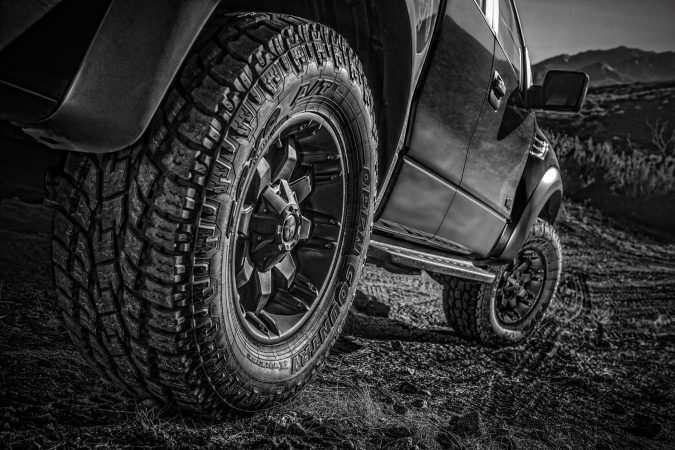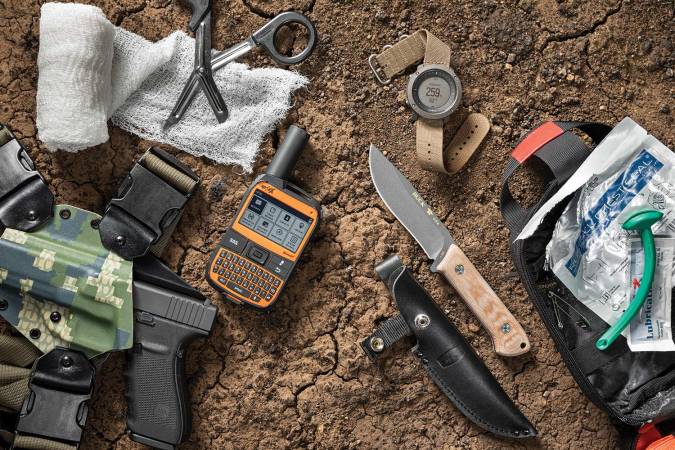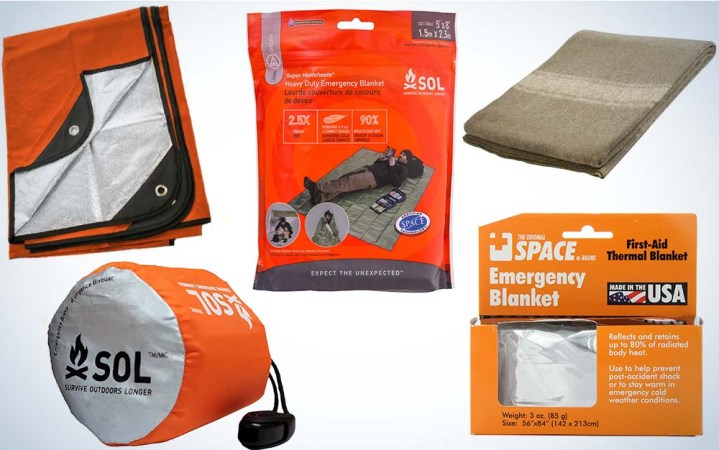We may earn revenue from the products available on this page and participate in affiliate programs. Learn More ›

Keeping an emergency cache and bugout bag at home is always a good idea, but what if disaster strikes while you’re out and about? Predicated on addressing the survival hierarchy of Security, Medical, Shelter, Water, Fire, Food, Light, and Communication, this expert-vetted gear gives you the means to get back to your safe space when disaster strikes—in a kit designed for fast and light movement.
1. Bag
Instead of a military-style pack that screams “I have a gun,” opt for the low-profile Umlindi from Hill People Gear ($220). Rated to carry up to 120 pounds, with modular accessories available to add volume and functionality, the 33-liter Umlindi weighs a reasonable 2 pounds 13 ounces. Although larger than needed for our loadout, thoughtfully placed compression straps allow it to be cinched tight to smaller loads, with the option of expanding if needed. Slap a PETA patch on it and you’re ready to roll.
2. Security
You can’t go wrong with the Glock G19, given its proven reliability. Pair it with SureFire’s XC2 light/laser ($449) for operating in low-light conditions. (SpongeBob grip tape is optional.) Carry it in Blackpoint Tactical’s Mini-Wing holster ($99). And for backup, have a fixed-blade knife suitable for both fighting and fieldcraft. Designed by a former Navy SEAL, the versatile and ergonomic AMTAC Blades‘ Northman ($450) includes a fire-starting ferro rod built into its sheath.
3. Medical
Even a minimalist trauma kit should include a tourniquet. The Ratcheting Medical Tourniquet is reusable, easy to apply one-handed, and requires less strength to tighten than other designs ($34). Combine that with an Israeli pressure dressing and hemostatic gauze for additional means of dealing with moderate to severe bleeding. Lesser wounds can be addressed with emergency laceration closures and tissue adhesive. Add sterile gloves, NAR Gecko Grip tape ($5), a topical antibiotic, and a few Band-Aids and nonessential “snivel” drugs, such as an anti-inflammatory and anti-diarrheal. Don’t forget hand sanitizer, soap, antimicrobial wipes, and two N95-rated respirator masks for protection from smoke and airborne pathogens.
4. Shelter
The lightweight Aqua Quest Safari Tarp ($79) is a versatile shelter option that pulls double duty as a poncho and a water collector, and can work as a makeshift stretcher. Regardless of the season, a knit beanie, a waterproof shell, and a synthetic insulated jacket, such as the excellent Arc’Teryx Atom LT Hoody ($269), are lightweight insurance against hypothermia. Work gloves come in handy for climbing fences and handling pots over a fire, but also provide protection from surface-borne viruses and bacteria. An extra pair of socks will keep your feet drier and less likely to develop blisters.
5. Water
FEMA recommends at least half a gallon of water for each day, but that doesn’t account for higher ambient temperatures and exertion levels. Keep three liters in your bag at a minimum and pack a few electrolyte tablets to help regulate your body’s sodium levels. The ultralight Sawyer MINI water filter ($22) can also be used like a straw or attached in-line with a hydration bladder. Add water-purification tablets and a single-wall stainless-steel bottle for boiling, should all else fail.
6. Fire
Getting cold is uncomfortable, but hypothermia can kill you. So don’t make things hard on yourself when it comes to starting a fire: A disposable lighter, stormproof matches, a ferro rod, SOLKOA Fastfire Tinder ($8), and petroleum jelly-soaked cotton balls stored in a plastic container add up to a reliable and redundant system.
Read Next: The Ultimate Bug-Out-Bag: How to Make an INCH Kit
7. Food
When you’re moving fast you need fuel, even more so when temperatures drop. Choose ready-to-eat items that won’t spoil quickly and that pack as many calories into as lightweight a package as possible. A mix of nut butter packets and bars that include both meat and dried fruit are a good choice. Just make sure to account for the expiration-hastening effect of high temperatures when they’re stored in a vehicle.
8. Light
If you can’t see it, you can’t find it, kill it, or eat it. A powerful flashlight can signal for help, find waypoints in the dark, double as an impact weapon, and degrade a bad guy’s night vision for a few crucial seconds. For navigating and administrative tasks, go hands-free with a lightweight headlamp that allows you to switch between white and red beams.
9. Communication
When cell towers go down and networks fail, a ham radio may be your best option for communication and receiving critical up-to-date information. The BaoFeng BF-F8HP ($63) is an affordable dual-band, two-way radio that can also receive National Weather Service and police frequencies.
10. Accessories
Gerber’s Center-Drive multi-tool is a pocketable toolbox ($84). The main tools can be opened with one hand, and it has a unique center-axis bit driver/holder that’s less awkward to use than other designs. Paracord is another essential survival item, and Tough-Grid’s mil-spec offering may be the best in the world ($10). A portable charger or two keeps your smartphone running, and if that fails you can continue to navigate with a road map and compass. Include a pen and weatherproof notebook ($5.99) for important numbers, personal information, and route-finding notes, and to leave messages if needed. Cash is king so carry at least $250 in small denominations.













